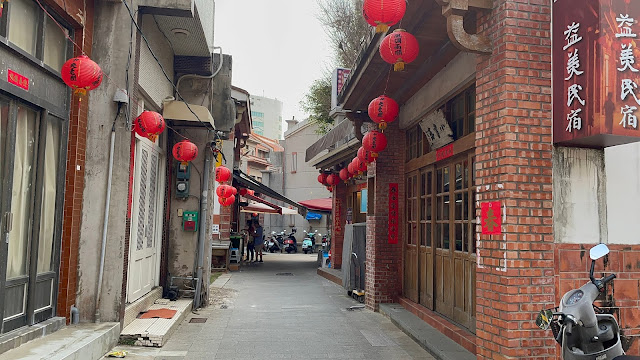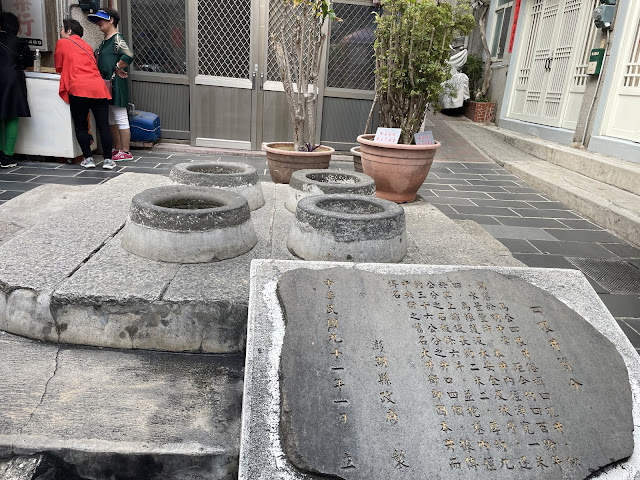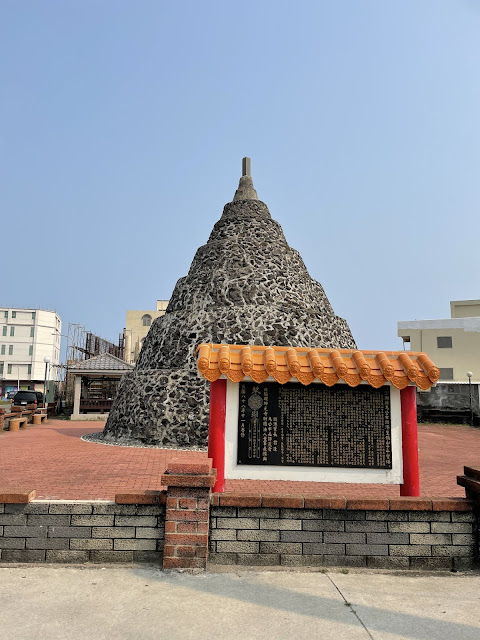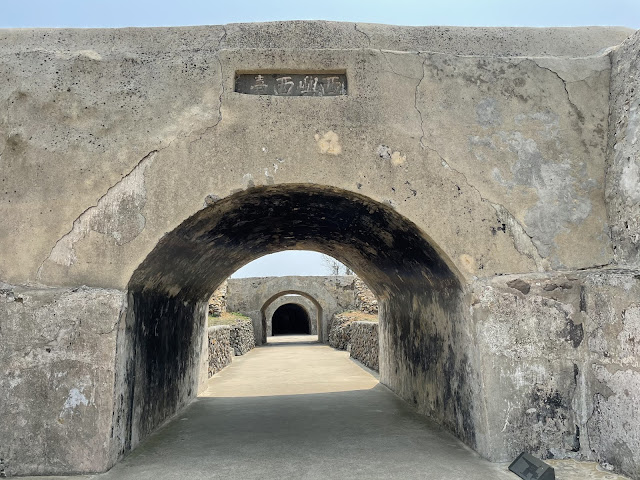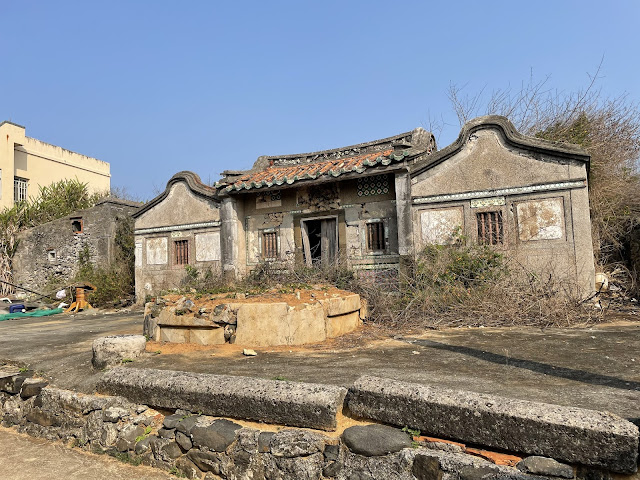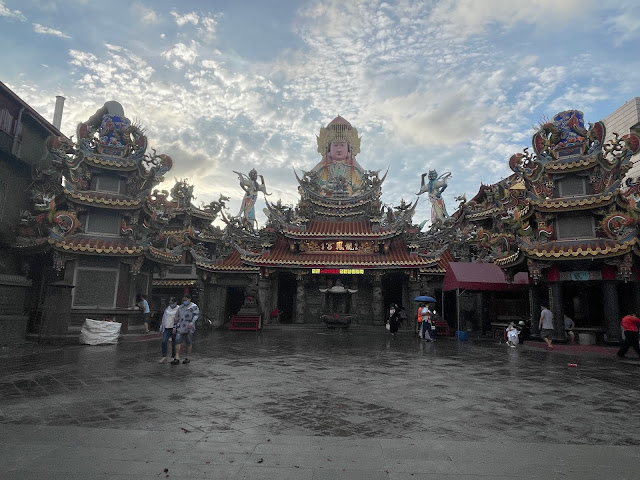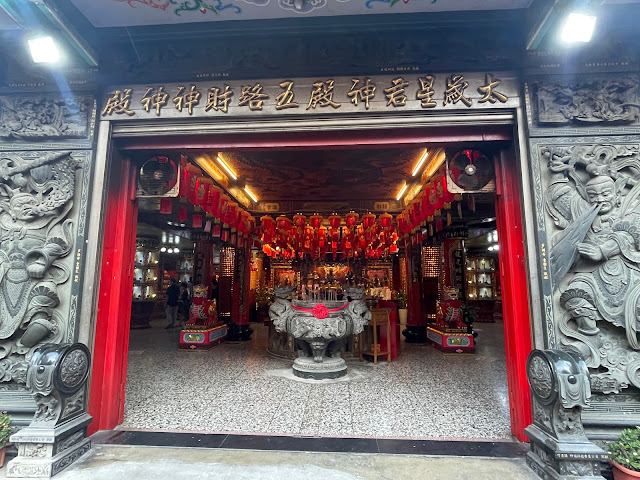This year, I bought a mooncake mold and tried my best to make some by myself. I can say it's a labor-intensive task. It also requires a bit of skill because I ended up with some broken dough, which made the filling visible. Although they're not perfect, I'm happy with the result since it was my first time making mooncakes. While searching through many recipes, I noticed that all of them used golden syrup, which I couldn't find anywhere.
I tried two combinations. First, I replaced the golden syrup with honey, and I think the result was really good, although the flavor wasn't the same as the original. The second time, I used sugar and water. Although it's possible to do, I would recommend using honey. The dough was a bit drier and less flexible, which led to some broken spots when I tried to put the filling in. Flavor-wise, the mooncakes were still really good though.
I'm a big fan of Hong Kong-style mooncakes, so that's the version I made. I filled one with cheesecake (a very unusual filling) and another with red bean. I also attempted one with taro and mochi inside, but I think I bought the wrong taro paste (probably just blended taro, not paste), as it was impossible to maintain the shape, resulting in a lot of filling leakage.
You can find the recipes at the bottom of my post!
What are a Mooncakes?
A mooncake (月餅) is a bakery product traditionally eaten during the Mid-Autumn Festival (中秋節) in parts of Asian countries. The festival is about lunar appreciation and moon watching, and mooncakes are regarded as a delicacy. Mooncakes are offered between friends or family while celebrating the festival.
Typical mooncakes are round pastries with a rich and thick filling, usually made from red bean paste or lotus seed paste, surrounded by a thin 2–3 mm crust. They may also contain yolks from salted duck eggs, symbolizing the full moon. Traditional mooncakes have imprints on top consisting of the Chinese characters for "longevity" or "harmony," as well as the name of the bakery and the filling inside. Additional decorations may include imprints of the Moon, Lady Chang'e on the Moon, flowers, vines, or a rabbit (symbol of the Moon).
Traditional fillings include:
Lotus seed paste (蓮蓉) - Considered by some to be the original and most luxurious mooncake filling. White lotus paste is even more premium. Sometimes, white kidney bean paste is used as a filler due to the high price of lotus paste.
Sweet bean paste (豆沙) - There are various pastes commonly used as fillings in Chinese desserts. While red bean paste made from azuki beans is the most common worldwide, regional preferences exist for bean paste made from mung beans or black beans.
Jujube paste (棗泥) - This sweet paste is made from ripe jujube (date) fruits. It has a dark red color, a slightly fruity/smoky flavor, and a slightly sour taste.
Five kernels (五仁) or mixed nuts - A filling made of coarsely chopped nuts and seeds, held together with maltose syrup. Different regions use various nuts and seeds such as walnuts, pumpkin seeds, watermelon seeds, peanuts, sesame seeds, or almonds. Candied winter melon or rock sugar pieces are often added for additional flavoring.
Traditional mooncake crust include:
Chewy - This crust, commonly used in Cantonese-style (Hong Kong style) mooncakes, has a reddish-brown tone and glossy sheen. It's made using a combination of thick sugar syrup, lye water, flour, and oil, resulting in a rich taste and a chewy yet tender texture. Maltose syrup can be added to increase chewiness.
Flaky - Flaky crusts are indicative of Suzhou- and Taiwan-style mooncakes. The dough is made by rolling alternating layers of oily dough and flour that has been stir-fried in oil, resulting in a texture similar to puff pastry.
Tender - Mooncakes from certain provinces of China, such as Shanghai-style mooncakes, have a tender crust instead of a flaky or chewy one. The texture of this crust is similar to the shortcrust pastry used in Western pie crusts or tart shells. It's made with a mixture of sugar, oil, flour, and water. This type of crust is also commonly used in other types of Chinese pastries, such as egg tarts.
Crumbly - Yunnan-style mooncakes have a dense, crumbly crust made using a hot water crust pastry that combines different kinds of flour with oil, salt, and hot water. This type of crust is uncommon in other regions.
Less traditional types of mooncake crusts can be made with:
Glutinous rice - This crust has a texture similar to mochi and is known colloquially as "snowskin mooncakes". Snow skin mooncakes are non-baked mooncakes originating from Hong Kong. snow skin mooncakes can be filled with a variety of fillings such as mung bean paste, fruit, green tea, jam, strawberry, chocolate, coffee, and cheese. Other flavored fillings include durian, sesame, mango pomelo sago, and purple yam.
Jelly - A crust made from gelling mixtures such as agar, gelatin, or konjac, flavored with a wide variety of fruit flavors.
How to make Mooncakes?
Making mooncakes takes plenty of time (or maybe I lack experience). The first time I made cheesecake filling, so yes, it took longer as I had to bake the cheesecake first. But the second time, when I made 40 mooncakes with strawberry filling, it took a total of 3.5 hours. I think that's quite a long time, and I was really tired at the end, lol.
All the recipes call for golden syrup, which I searched for in several shops, but unfortunately, it was nowhere to be found. In my first attempt, I used honey. I think the texture of the dough is quite nice, although it lacks flavor and color, but it's not a big deal. Using sugar melted with water isn't a very good idea. I found the dough much more difficult to work with than the one with honey, and it was a lot less flexible. I will still share both variations I used.
Recipe 1 - Cheesecake Filled Mooncakes (12 mooncakes, 50g mold)
Ingredients
-> Dough:
150g flour
80g golden syrup or honey
30g oil
1/3 teaspoon Kansui / lye water
-> Cheesecake filling:
250g cream cheese
2 eggs
30g sugar
-> Egg wash:
1 egg yolk
1 tbsp water
Preparation
-> Preparing cheesecake:
Mix cream cheese (at room temperature) with sugar. Add eggs one at a time and mix until smooth. I used a 6-inch square pan to bake it. Bake for about 15-20 minutes at 200 degrees Celsius. It's also possible to steam it instead, but I prefer the flavor of baked cheesecake. Allow it to cool down and then divide it into 12 pieces, rolling them into balls. Each piece should be 30g in size.
-> Preparing mooncake crust:
Mix all the dough ingredients together until a smooth dough forms. Divide the dough into 12 pieces, with each piece weighing 20g.
-> Assembling:
Roll or flatten a ball of dough in your hand. Place the filling in the middle and then cover it with the dough. Roll it into a ball. Repeat this process with every piece. Dust the mooncake mold with some flour or cornstarch. Place each ball in the mold and press down gently to shape it.
-> Baking:
Once all the mooncakes are shaped, place them in a preheated oven at 190 degrees Celsius. Bake for 5 minutes. After this time, remove the mooncakes from the oven and gently brush them with egg wash. Place them back in the oven and bake for an additional 20-25 minutes at 170 degrees Celsius or until they turn golden brown.
-> Storing:
Mooncakes can be stored for up to 2 weeks in an airtight container in the fridge.
You can also check out my video:
Recipe 2 - Read beans Filled Mooncakes (20 mooncakes, 50g mold)
Ingredients
-> Dough:
110 g sugar
40 g water
50g oil
220g flour
-> Filling:
600g store-bough red bean filling
-> Egg wash:
1 egg yolk
1 tbsp water
Preparation
-> Preparing mooncake crust:
Mix sugar with warm water until all is melted, and syrup forms. Add oil and flour, mix until a smooth dough forms. Divide the dough into 20 pieces, with each piece weighing 20g.
-> Preparing filling:
Divide the bean paste into 20 balls, each weighing 30g.
-> Assembling:
Roll or flatten a ball of dough in your hand. Place the filling in the middle and then cover it with the dough. Roll it into a ball. Repeat this process with every piece. Dust the mooncake mold with some flour or cornstarch. Place each ball in the mold and press down gently to shape it.
-> Baking:
Once all the mooncakes are shaped, place them in a preheated oven at 190 degrees Celsius. Bake for 5 minutes. After this time, remove the mooncakes from the oven and gently brush them with egg wash. Place them back in the oven and bake for an additional 20-25 minutes at 170 degrees Celsius or until they turn golden brown.
-> Storing:
Mooncakes can be stored for up to 2 weeks in an airtight container in the fridge.
You can also check out my video:














